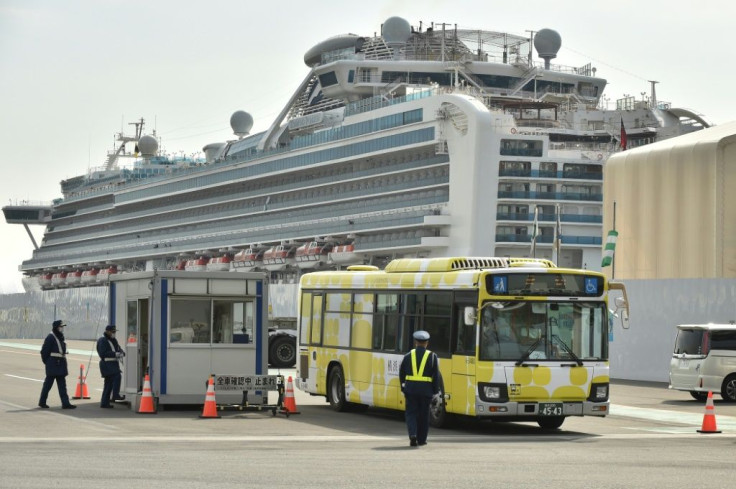Coronavirus Survives On Surface For 17 Days, CDC Study On COVID-19 Cruise Ship Reveals

KEY POINTS
- A CDC study found SARS-CoV-2 can survive for up to 17 on surfaces if left alone
- It studied the two cruise ships, Diamond Princess and Grand Princess, to uncover this information
- Previous studies confirmed the durability of the virus in the external environment
Seems the world now has to live with the horrific possibility "SARS-CoV-2" (or severe acute respiratory syndrome coronavirus 2), the virus that causes COVID19, is both an airborne threat and a surface menace that can survive for more than two weeks on some surfaces.
The latter discovery, which is startling and alarming at the same time revealed earlier this month, was confirmed by a study of the interiors of the infamous cruise ship, Diamond Princess, still anchored in Yokohama, Japan. At one point in February, the more than 800 people aboard this ill-fated ship represented the third largest concentration of the virus in the world.
The ship, which carried 3,711 passengers and crew when it entered quarantine on February 4, is now empty of passengers, except for a few volunteeer crew. Nine people died after disembarking the ship. A total of 712 people aboard the Diamond Princess, or 19.2% of the total complement, were sick from COVID-19.
A study published Monday by the U.S. Centers for Disease Control and Prevention (CDC) confirms SARS-CoV-2 can survive on surfaces for up to 17 days. It examines two public health responses to the COVID-19 outbreaks on the Diamond Princess ship and the Grand Princess cruise ship now anchored in the waters off California.
The study found SARS-CoV-2 “was identified on a variety of surfaces in cabins of both symptomatic and asymptomatic infected passengers up to 17 days after cabins were vacated...". More specifically, SARS-CoV-2 survived for up to 17 days aboard the Diamond Princess, which is far longer on surfaces than shown by previous research. Researchers, however, warned the finding doesn’t necessarily mean SARS-CoV-2 was spread by surface.
It also said COVID-19 on cruise ships poses a risk for the rapid spread of disease, "causing outbreaks in a vulnerable population, and aggressive efforts are required to contain spread."

The CDC findings are disturbing and mirror that of studies released recently by researchers from the National Institutes of Health (NIH), UCLA and Princeton University. These separate studies found SARS-CoV-2 can last up to three days on plastic and stainless steel. The studies also found the amount of the virus left on those surfaces decreased over time.
The new CDC study sought to determine how “transmission occurred across multiple voyages of several ships.” It noted as of March 17, there were at least 25 cruise ship voyages with confirmed COVID-19 cases that were detected either during or after the cruise ended.
The study revealed 46.5% of infections aboard the Diamond Princess were asymptomatic when they were tested. This finding explains the “high attack rate” of the virus among passengers and crew.
On the other hand, the Grand Princess saw 78 of its passengers and crew test positive for COVID-19. It eventually docked at the Port of Oakland where passengers disembarked and were transported to federal quarantine facilities. The Diamond Princess and Grand Princess accounted for more than 800 total COVID-19 cases and 10 deaths.
A study published recently in the New England Journal of Medicine (NEJM) revealed the alarming discovery SARS-CoV-2 can remain alive on certain surfaces for up to nine hours. The 10 experimental conditions in the study involved both SARS-CoV-2 and SARS-CoV-1 in five environmental conditions -- aerosols, plastic, stainless steel, copper and cardboard.
The study showed SARS-CoV-2 remained viable in aerosols throughout three hours, which means this virus remained contagious over that time. It also revealed SARS-CoV-2 is more stable on plastic and stainless steel compared to copper and cardboard. This virus was detected up to 72 hours after application to plastic and stainless steel surfaces.
On copper, no viable SARS-CoV-2 was measured after four hours. On cardboard, no viable SARS-CoV-2 was measured after 24 hours.
© Copyright IBTimes 2024. All rights reserved.





















